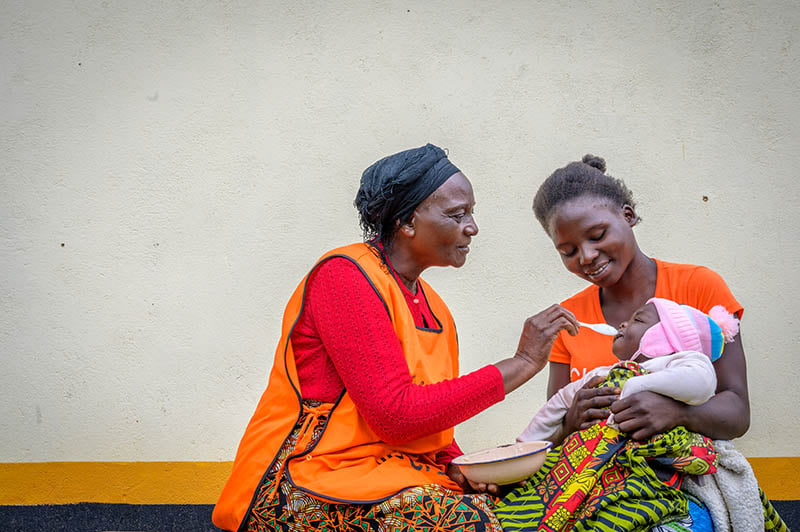WASHINGTON D.C. (August 19, 2025) — This year, World Humanitarian Day comes as violence against aid workers is escalating, humanitarian needs are at record highs and unprecedented funding shortfalls threaten the very foundation of humanitarian response, warns Christian global humanitarian organization World Vision.
In 2024, 383 aid workers were killed in the line of duty and this year is already on course to become the deadliest year yet for humanitarian personnel.
“When we hear ‘ultimate sacrifice’ or ‘killed in the line of duty,’ we don’t always think of humanitarians,” says Margaret Schuler, World Vision’s senior vice president of international programs. “But so far this year, 245 more have lost their lives to reach families in desperate need. This World Humanitarian Day, World Vision honors them and calls on governments and actors to protect aid workers and ensure safe access to lifesaving aid.”
Meanwhile, severe malnutrition, unsafe water, and deaths from preventable diseases are becoming a daily reality for millions and those needs are steadily outpacing funding to help.
According to the 2025 Global Humanitarian Overview, a record $45.48 billion is required to assist 181.2 million of the 300 million people in need across 72 countries. However, as of mid-year, only 16.8% of that funding—$7.64 billion—has been reported, representing a staggering 40% decline compared to the same period in 2024.
Disruptions to aid funding and supply chain are having real impacts on the world’s most vulnerable. A recent World Vision report “Hunger, Harm and Hard Choices,” revealed the devastating toll that humanitarian funding cuts are taking on displaced children and their families across 13 crisis-affected countries. Families who experienced food assistance cuts were the most vulnerable of all; they were 5.4 times more likely to be moderately or severely food insecure and reported worse child-related education and protection outcomes.
World Vision teams report that around the world, the supply of ready-to-use therapeutic food (RUTF) – an essential treatment for severely malnourished children – has been severely disrupted.
“Funding gaps mean we are not able to help as many people or save as many children who are often the most severely impacted by conflict, displacement or hunger,” says Schuler. “Humanitarian assistance is not charity. It’s not wasteful. It is a strategic investment that we’ve seen time and time again meet urgent needs while building resilient communities and sustainable systems that last long after we leave.”
World Vision is urging Congress to protect funding for lifesaving humanitarian assistance in upcoming budget appropriations, especially programs that target populations displaced by conflict and disaster and those facing severe hunger. In addition, World Vision advocates for appropriations for critical global health programs and other initiatives that help ensure bright futures for children.
“We know that these investments work,” Schuler said. “When we’ve partnered with the American government, we’ve seen deaths from AIDS, malaria, and childhood diseases cut in half, millions of lives saved from hunger and starvation, and millions more provided access to clean water.”
Despite shifts in the humanitarian funding landscape, World Vision is committed to serving the world’s most vulnerable. Over the last decade, World Vision has increased the amount spent in fragile contexts by 188%. In 2024, $744 million was invested in innovative programs in 22 of the most fragile countries and subnational regions where it operates.
In FY24, World Vision reached the highest number of vulnerable children in a single year while responding to 87 crises and disasters. Over 35 million people, including 19 million children, in 65 countries benefitted from World Vision’s emergency relief, one of the organization’s foundational programs. World Vision maintains the capacity to deploy technical experts and field teams within 24 to 48 hours of a rapid onset disaster.
“If lifesaving humanitarian work is not restored soon, we fear preventable child deaths will continue to rise and regional instability will grow,” said Schuler. “We urge our nation’s leaders to resume the flow of food, medicine, and congressionally approved aid funding. Ultimately, what World Vision and Christians across the country want to see is a future where the U.S. continues its legacy of humanitarian leadership and compassion—saving countless lives, preventing conflict, and living out our nation’s highest values. That’s how we can best #ActForHumanity as this year’s World Humanitarian Day theme boldly calls us to do.”
